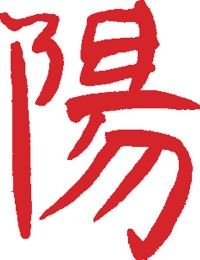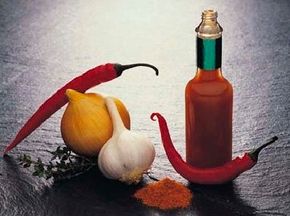The urinary bladder (pang guang), gallbladder (dan), triple burner (san jiao), and the curious organs are the second group of yang organs in traditional Chinese medicine. Like the first group, these organs contribute to the digestive process. Some of these organs, like the gall bladder, are also thought to influence emotions and personality.
Urinary Bladder (Pang Guang)
The urinary bladder's role is the same as it is in the West, storing urine and discharging it periodically. It is paired with the kidneys. Symptoms of bladder dysfunction include difficulty urinating, with burning, pain, urgency, bleeding, and retention. The urinary bladder receives and excretes urine.
After receiving turbid fluids from the lungs, small intestine, and large intestine, the kidneys extract the last of the pure essence. The turbid remnants are then sent to the bladder, where they are stored until they are excreted from the body through urination.
Gallbladder (Dan)
The gallbladder is paired with the liver; liver disharmonies often affect the gallbladder and vice versa. Disharmonies of the gallbladder can produce symptoms such as intercostal pain (pain between the ribs), anger, rash decisions, timidity, digestive problems, and emotional disturbances.
The gallbladder stores and secretes bile. The liver produces bile and the gallbladder stores it. When you eat fatty foods, the gallbladder contracts and pours bile into the small intestine to assist in digestion.
Overconsumption of fatty foods can adversely affect the function of the liver and gallbladder. The gallbladder rules decisions. An indecisive, timid person is said to have a weak gallbladder. A person who acts impulsively or out of anger, on the other hand, could be suffering from an excess yang condition in the gallbladder.
Triple Burner (San Jiao)
The triple burner is not an organ per se, but rather it is a grouping of organs by function and location. The triple burner is paired with the pericardium in a yin/yang relationship. The primary function of the triple burner organs is water metabolism, and the organs are grouped as follows:
Upper Burner: Comprising the heart and lungs, the upper burner is described as a "fog" or "mist." It disperses the essence of food and qi throughout the body. Illness usually attacks this burner first, then it proceeds to the middle and lower burners.
Middle Burner: The spleen and stomach function together as the middle burner, acting as a "foam." Metabolism in this burner involves churning food and water into a digestible, souplike consistency. Digestive disorders are often described as middle burner imbalances.
Lower Burner: The lower burner encompasses the organs below the navel: the intestines, kidneys, and bladder. It is considered a "swamp," since it is the sewage system of the body, excreting waste.
The Extra or "Curious" Organs
The curious organs are so named because their existence can be confirmed through observation, but they don't fall into any particular category. They are the marrow, bones, blood vessels, brain, uterus, and gallbladder.
Although the gallbladder is classified as a yang organ, it is also considered a curious organ since it is the only yang organ that stores a vital substance (bile). The marrow is a vital essence stored by the kidneys. It is related to growth and development and nourishes the brain. The functions of the other organs parallel their Western counterparts.
For more about traditional Chinese medicine, treatment, cures, beliefs, and other interesting topics, see:
ABOUT THE AUTHORS:
Bill Schoenbart has been practicing traditional Chinese medicine (TCM) since 1991, when he earned a Masters degree in TCM. He teaches TCM medical theory and herbalism at an acupuncture school in California, and also maintains a clinical practice.
Ellen Shefi is a licensed massage technician, licensed acupuncturist, and registered dietitian. She is a member of the American Association of Acupuncture and Oriental Medicine, the American Herb Association, and the Oregon Acupuncture Association.

